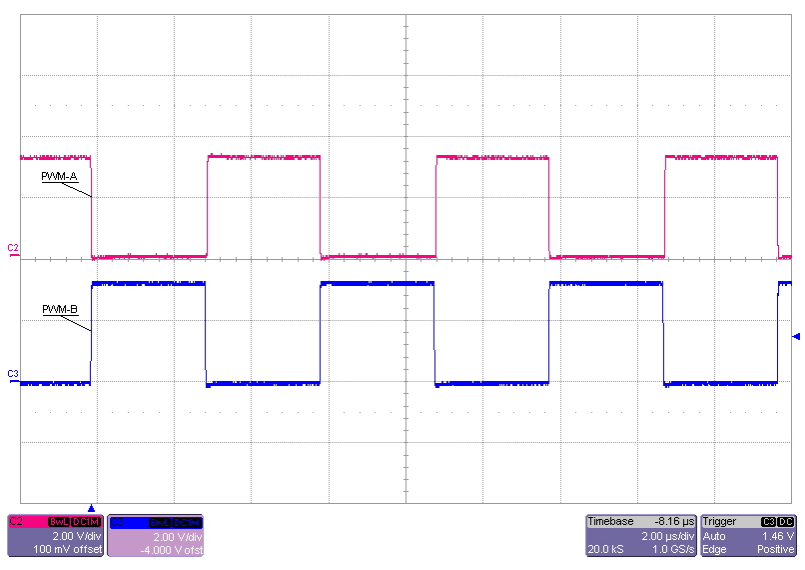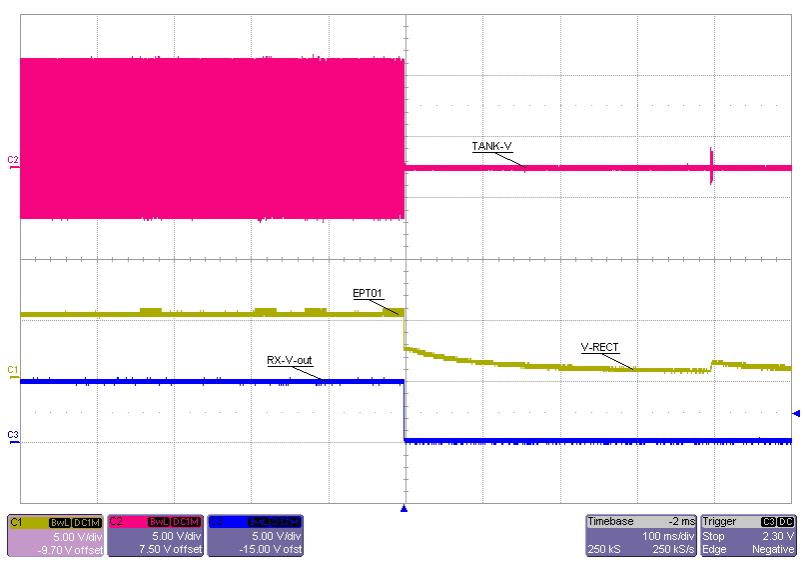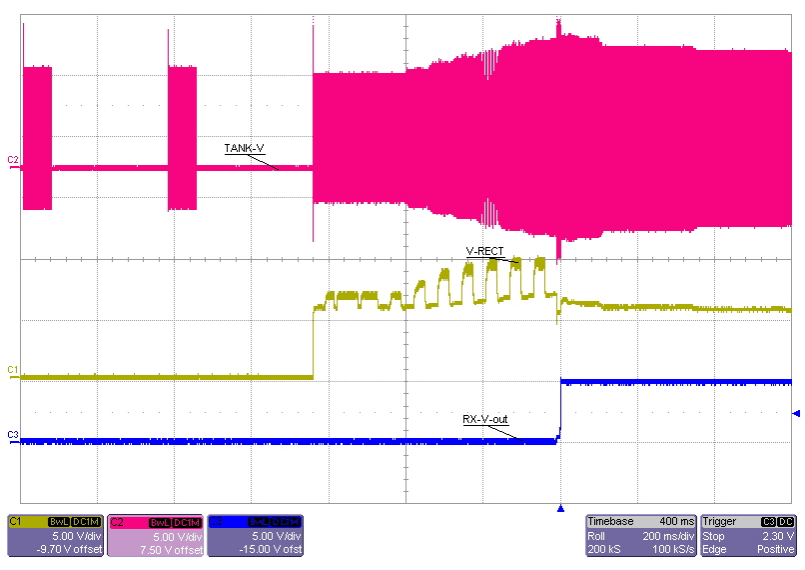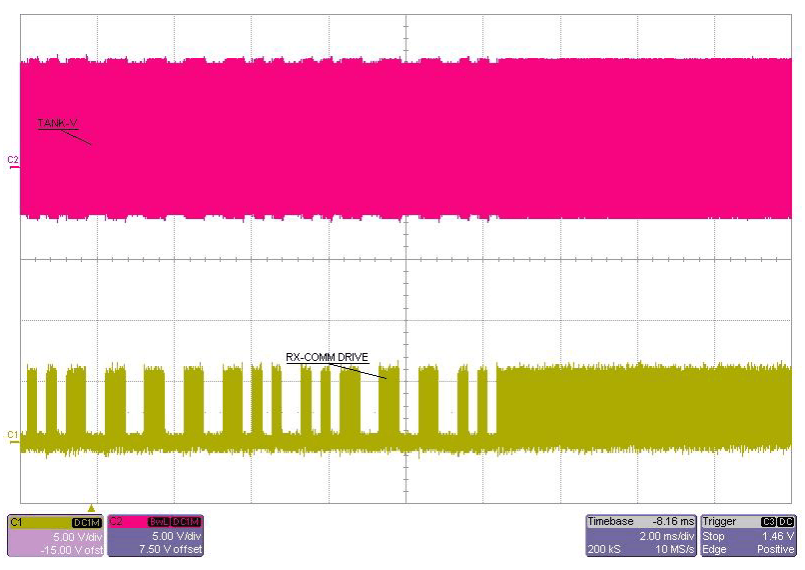SLUSBD6D July 2013 – July 2016
PRODUCTION DATA.
- 1 Features
- 2 Applications
- 3 Description
- 4 Revision History
- 5 Pin Configuration and Functions
- 6 Specifications
-
7 Detailed Description
- 7.1 Overview
- 7.2 Functional Block Diagram
- 7.3 Feature Description
- 7.4 Device Functional Modes
- 7.5 Programming
- 8 Application and Implementation
- 9 Power Supply Recommendations
- 10Layout
- 11Device and Documentation Support
- 12Mechanical, Packaging, and Orderable Information
Package Options
Mechanical Data (Package|Pins)
- RGZ|48
Thermal pad, mechanical data (Package|Pins)
- RGZ|48
Orderable Information
6 Specifications
6.1 Absolute Maximum Ratings
over operating free-air temperature range (unless otherwise noted)(1)| MIN | MAX | UNIT | |
|---|---|---|---|
| Voltage applied at V33D to GND | –0.3 | 3.6 | V |
| Voltage applied at V33A to GND | –0.3 | 3.6 | |
| Voltage applied to any pin (2) | –0.3 | 3.6 | |
| Storage temperature, Tstg | –40 | 150 | °C |
(1) Stresses beyond those listed under Absolute Maximum Ratings may cause permanent damage to the device. These are stress ratings only, which do not imply functional operation of the device at these or any other conditions beyond those indicated under Recommended Operating Conditions. Exposure to absolute-maximum-rated conditions for extended periods may affect device reliability.
(2) All voltages referenced to GND.
6.2 ESD Ratings
| VALUE | UNIT | |||
|---|---|---|---|---|
| V(ESD) | Electrostatic discharge | Human-body model (HBM), per ANSI/ESDA/JEDEC JS-001(1) | ±2000 | V |
| Charged-device model (CDM), per JEDEC specification JESD22-C101(2) | ±750 | |||
(1) JEDEC document JEP155 states that 500-V HBM allows safe manufacturing with a standard ESD control process.
(2) JEDEC document JEP157 states that 250-V CDM allows safe manufacturing with a standard ESD control process.
6.3 Recommended Operating Conditions
over operating free-air temperature range (unless otherwise noted)| MIN | NOM | MAX | UNIT | |||
|---|---|---|---|---|---|---|
| V | Supply voltage during operation | V33D, V33A | 3 | 3.3 | 3.6 | V |
| TA | Operating free-air temperature | –40 | 110 | °C | ||
| TJ | Junction temperature | 110 | °C | |||
6.4 Thermal Information
| THERMAL METRIC(1) | bq500212A | UNIT | |
|---|---|---|---|
| RGZ (VQFN) | |||
| 48 PINS | |||
| RθJA | Junction-to-ambient thermal resistance | 28.4 | °C/W |
| RθJC(top) | Junction-to-case (top) thermal resistance | 14.2 | °C/W |
| RθJB | Junction-to-board thermal resistance | 5.4 | °C/W |
| ψJT | Junction-to-top characterization parameter | 0.2 | °C/W |
| ψJB | Junction-to-board characterization parameter | 5.3 | °C/W |
| RθJC(bot) | Junction-to-case (bottom) thermal resistance | 1.4 | °C/W |
(1) For more information about traditional and new thermal metrics, see the Semiconductor and IC Package Thermal Metrics application report.
6.5 Electrical Characteristics
over operating free-air temperature range (unless otherwise noted)| PARAMETER | TEST CONDITIONS | MIN | TYP | MAX | UNIT | |
|---|---|---|---|---|---|---|
| SUPPLY CURRENT | ||||||
| IV33A | Supply current | V33A = 3.3 V | 8 | 15 | mA | |
| IV33D | V33D = 3.3 V | 44 | 55 | |||
| ITOTAL | V33D = V33A = 3.3 V | 52 | 60 | |||
| INTERNAL REGULATOR CONTROLLER INPUTS AND OUTPUTS | ||||||
| V33 | 3.3-V linear regulator | Emitter of NPN transistor | 3.25 | 3.3 | 3.6 | V |
| V33FB | 3.3-V linear regulator feedback | 4 | 4.6 | |||
| IV33FB | Series pass base drive | VIN = 12 V; current into V33FB pin | 10 | mA | ||
| Beta | Series NPN pass device | 40 | ||||
| EXTERNALLY SUPPLIED 3.3 V POWER | ||||||
| V33D | Digital 3.3-V power | TA = 25°C | 3 | 3.6 | V | |
| V33A | Analog 3.3-V power | TA = 25°C | 3 | 3.6 | ||
| V33Slew | V33 slew rate | V33 slew rate between 2.3 V to 2.9 V, V33A = V33D |
0.25 | V/ms | ||
| DIGITAL DEMODULATION INPUTS COMM_A+, COMM_A–, COMM_B+, COMM_B– | ||||||
| Vbias | COMM+ bias voltage | 1.5 | V | |||
| COMM+, COMM– | Modulation voltage digital resolution | 1 | mV | |||
| REA | Input impedance | Ground reference | 0.5 | 1.5 | 3 | MΩ |
| IOFFSET | Input offset current | 1-kΩ source impedance | –5 | 5 | µA | |
| ANALOG INPUTS V_SENSE, I_SENSE, T_SENSE, LED_MODE, LOSS_THR, SNOOZE_CAP, PWR_UP | ||||||
| VADDR_OPEN | Voltage indicating open pin | LED_MODE open | 2.37 | V | ||
| VADDR_SHORT | Voltage indicating pin shorted to GND | LED_MODE shorted to ground | 0.36 | |||
| VADC_RANGE | Measurement range for voltage monitoring | All analog inputs | 0 | 2.5 | ||
| INL | ADC integral nonlinearity | –2.5 | 2.5 | mV | ||
| RIN | Input impedance | Ground reference | 8 | MΩ | ||
| CIN | Input capacitance | 10 | pF | |||
| DIGITAL INPUTS/OUTPUTS | ||||||
| VOL | Low-level output voltage | IOL = 6 mA, V33D = 3 V | DGND1 + 0.25 | V | ||
| VOH | High-level output voltage | IOH = –6 mA, V33D = 3 V | V33D – 0.6 V | |||
| VIH | High-level input voltage | V33D = 3 V | 2.1 | 3.6 | ||
| VIL | Low-level input voltage | V33D = 3.5 V | 1.4 | |||
| IOH(MAX) | Output high source current | 4 | mA | |||
| IOL(MAX) | Output low sink current | 4 | ||||
| SYSTEM PERFORMANCE | ||||||
| VRESET | Voltage where device comes out of reset | V33D pin | 2.4 | V | ||
| tRESET | Pulse width needed for reset | RESET pin | 2 | µs | ||
| ƒSW | Switching Frequency | 112 | 205 | kHz | ||
6.6 Typical Characteristics



